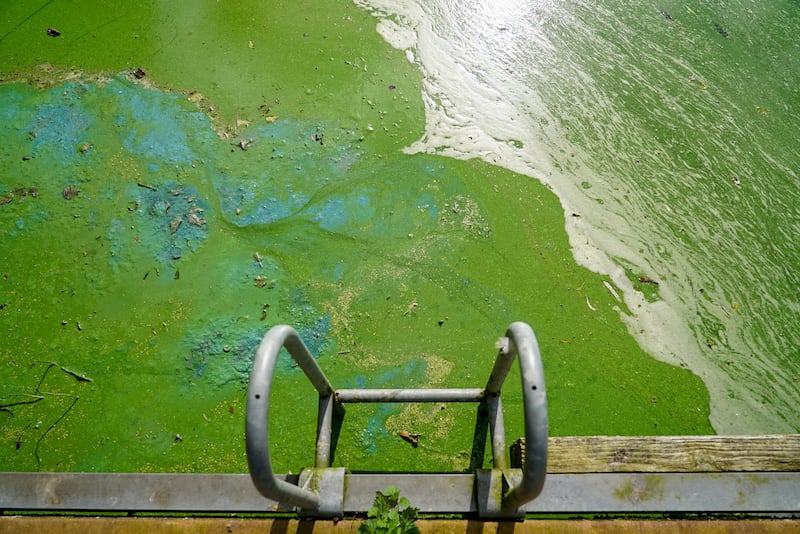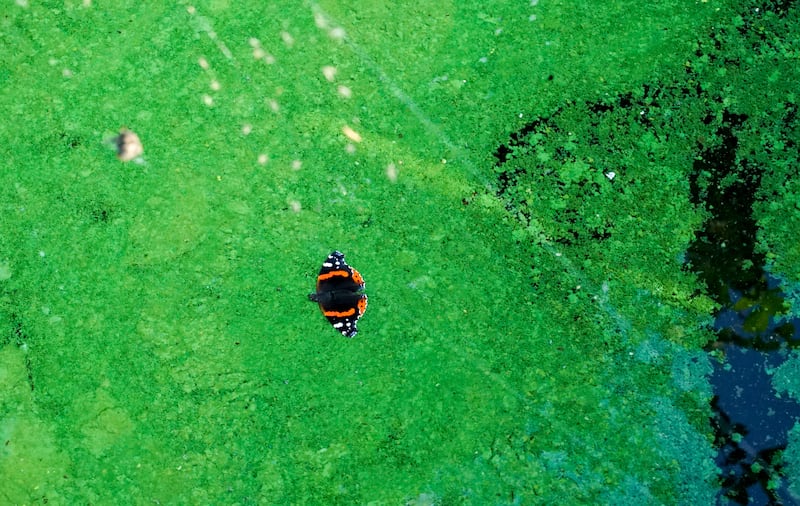During a phone call with my sister last week, she mentioned that she had recently gone to Waterfoot in Co Antrim for a holiday. I was intrigued: Waterfoot is a pleasant coastal village with a beautiful beach, but my sister lives in a fairly similar coastal village in nearby Co Derry. It turns out that the expansive Derry coastline and lower River Bann are currently unsuitable for bathing due to the presence of blue-green algae that has spread from Lough Neagh.
As the owner of a large, boisterous and seemingly tireless Malinois dog, my sister had relied on regular swims to tame its energy. In June, four dogs died after ingesting water contaminated by blue-green algae in Lough Melvin, on the Fermanagh-Leitrim border. An algal bloom was spotted near the mouth of the Bann several weeks later, and poor Scout has been stuck on dry land ever since.
Generally speaking, I’m a fan of algae. Whether it’s dulse, nori, or laver bread, they’re often delicious. Fish oils are rich in healthy fats, especially EPA and DHA, but they make these from algae. Spirulina is a nutritional powerhouse. I was disappointed that they might be ruining our waterways.
I was quite relieved to find out that blue-green algae are technically a type of bacteria – cyanobacteria. In warm waters, and in the presence of excess phosphorus and nitrogen, these algae can form blooms that produce toxins. These cyanotoxins can cause gastrointestinal issues and skin rashes, and are often fatal to aquatic organisms and even larger animals such as dogs.
Actor Armie Hammer resurfaces as host of celebrity podcast
Heart-stopping Halloween terror: 13 of cinema’s greatest jump scares
Doctor Odyssey’s core message: just imagine Pacey from Dawson’s Creek holding you tight and saying, ‘Shhh, it’s okay’
Conor Niland’s The Racket nominated for William Hill Sports Book of the Year
One thing that puzzled me was that our waterways, particularly Lough Neagh and the Bann, had seemed much clearer in recent years. If agricultural run-off, industrial waste or sewage were causing bacteria to grow, it would make sense that these would also result in cloudy or dirty water. In fact, the culprit was not a pollutant but a filter.

The zebra mussel, Dreissena polymorpha, is a small, invasive mollusc. Originally native to the Caspian and Black Seas in eastern Europe, zebra mussels were first discovered here in the 1990s. Like many invasive aquatic species, they travelled in the ballast water of shipping vessels, arriving in Britain over a century ago. EU regulations on VAT were modified in 1993, bringing a glut of used boats from Britain, along with a small, striped, prolific bivalve.
Zebra mussels are filter feeders, using their gills to trap and consume particles in the water, including algae and zooplankton. This explains the increase in water clarity where they have become established. Such a dramatic change in the ecosystem can have disastrous effects for native species though. Zebra mussels outcompete native mussels, and by filtering out zooplankton they remove much of the food that juvenile fish would typically consume.
Just as various departments have failed to tackle or have even incentivised agricultural pollution that feeds the algal bloom, no agency has been willing or able to assume responsibility for its future
Because they reproduce so rapidly and attach to hard surfaces, they also tend to clog up infrastructure, including water treatment facilities and pipes. One thing that they don’t consume, however, is cyanobacteria. So, while the water that they produce appears pleasant, it harbours a serious threat.
Once zebra mussels reached Lough Neagh they were almost impossible to evict. The largest body of fresh water on these islands, with a surface area larger than Malta, the lough supplies almost half of the North’s drinking water. No single agency or department has responsibility for it, while the lake bed itself is owned by Nicholas Ashley-Cooper, the 12th Earl of Shaftesbury.

Lough Neagh is dying. Whose fault is it?
The Ashley-Coopers are a storied aristocratic dynasty; the seventh earl dominated Victorian society, leading everything from factory reform campaigns to the evangelical scientific society known as the Victoria Institute. Other members have included distinguished philosophers, an Australian rugby international and a playboy who was murdered in France by his wife.

The present earl financially benefits from sand extraction on the lake bed, used to make the playing surfaces at Lough Erne golf resort and at Croke Park. Yet he has also offered to sell the lake to a responsible party, should one be found. Just as various departments have failed to tackle or have even incentivised agricultural pollution that feeds the algal bloom, no agency has been willing or able to assume responsibility for its future.
Blue-green algae are a symptom, while zebra mussels and nutrient run-off are the proximate causes. Ultimately, the reason why some of our most significant waterways are in such peril is political.
Stuart Mathieson is a postdoctoral fellow in the School of History and Geography at Dublin City University




